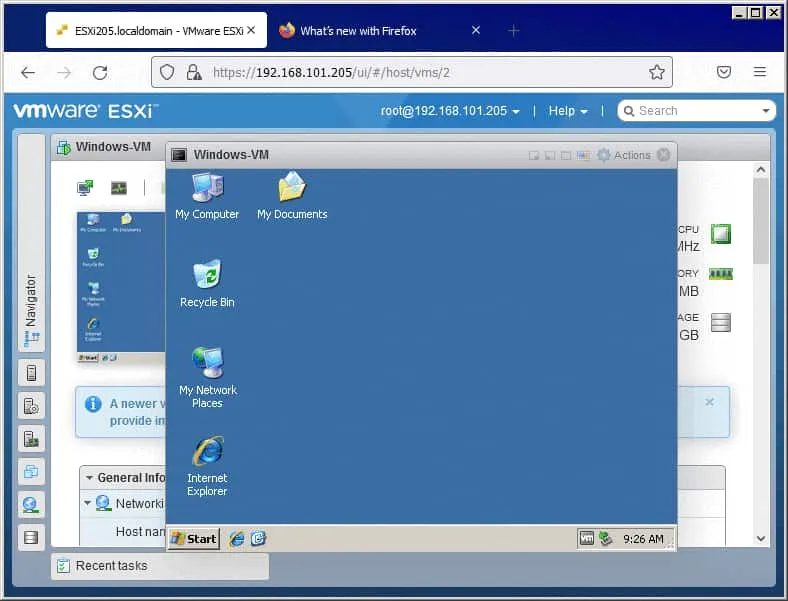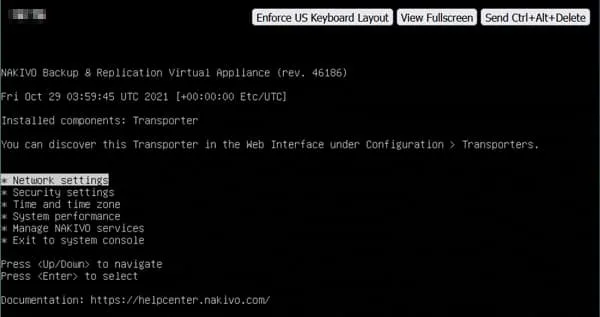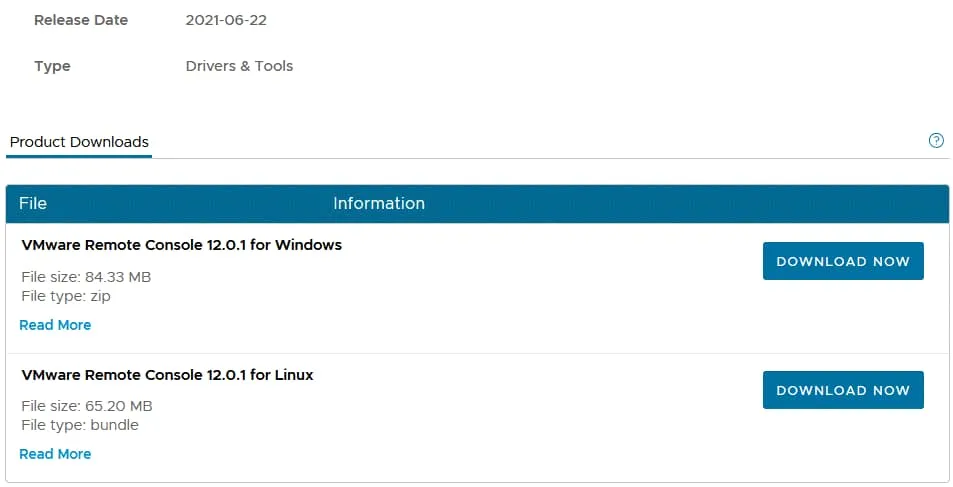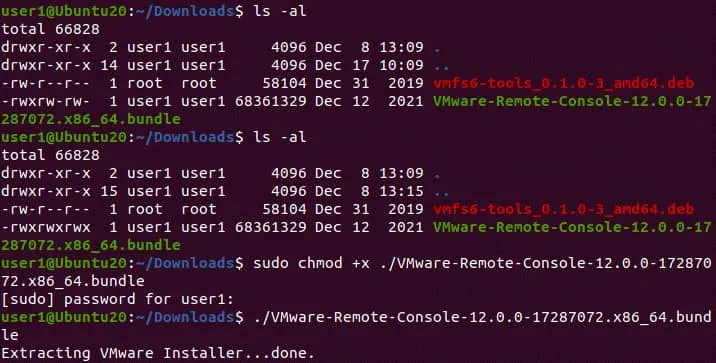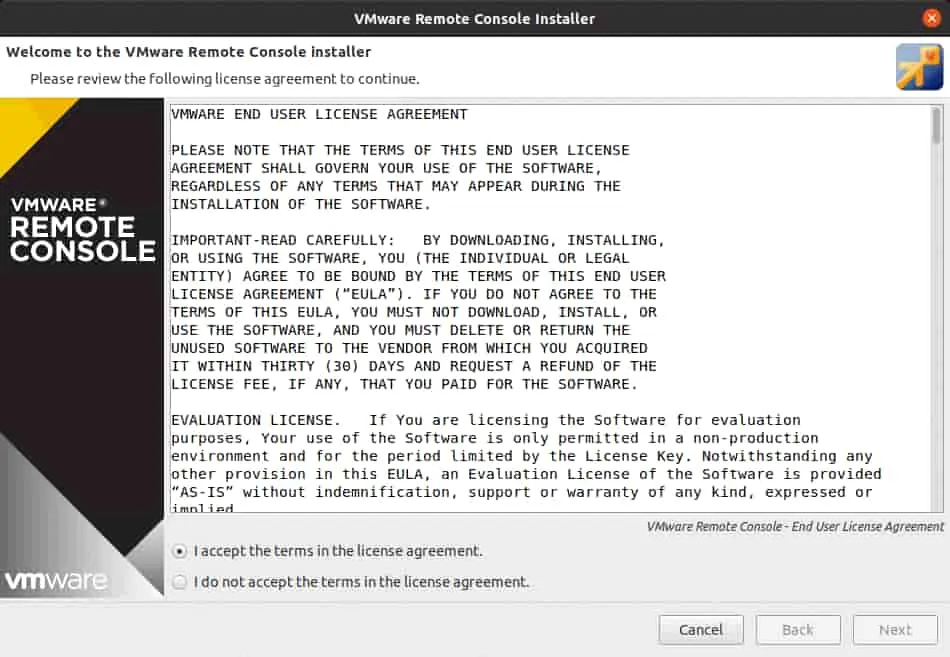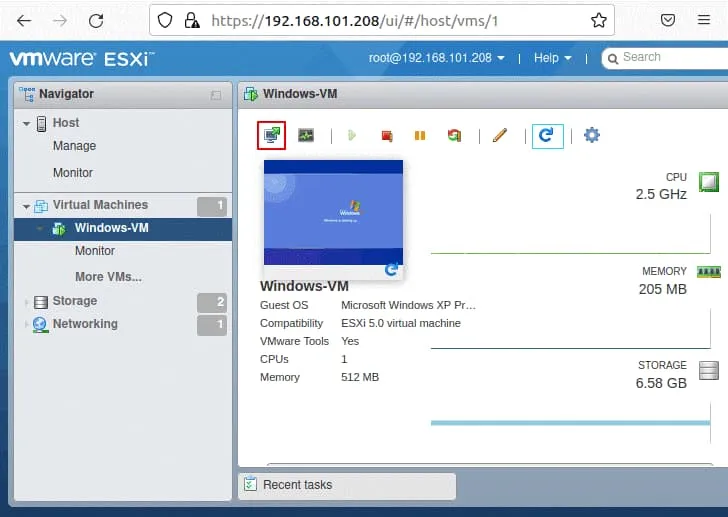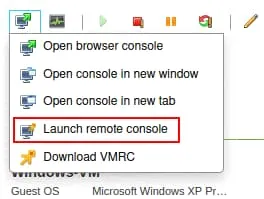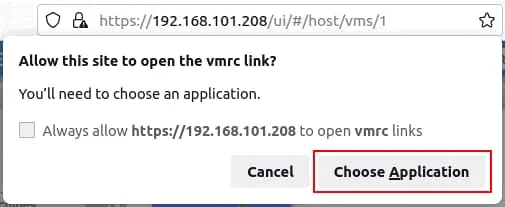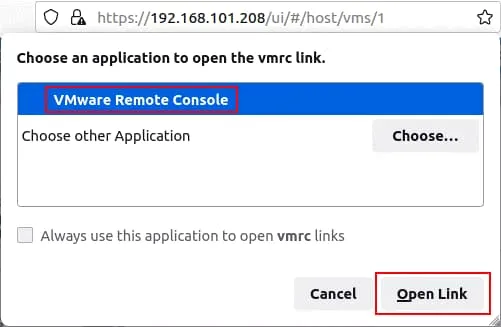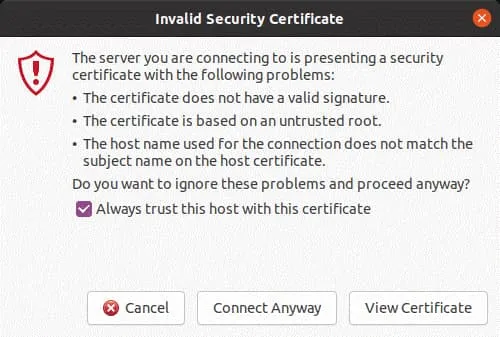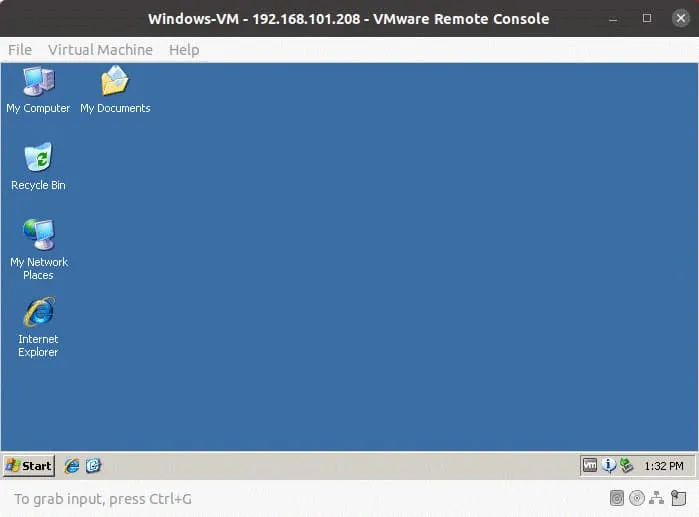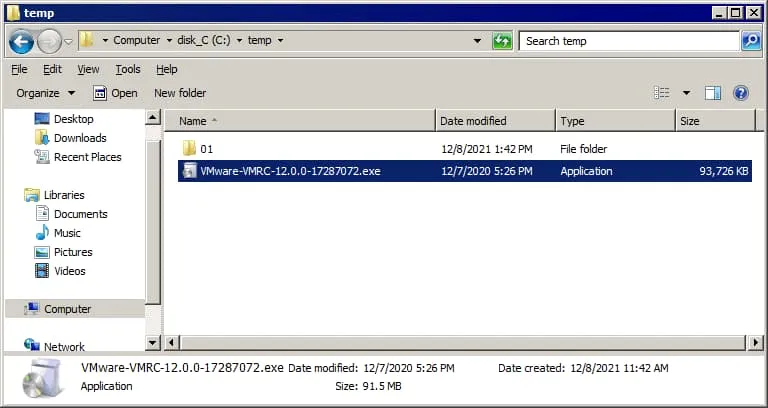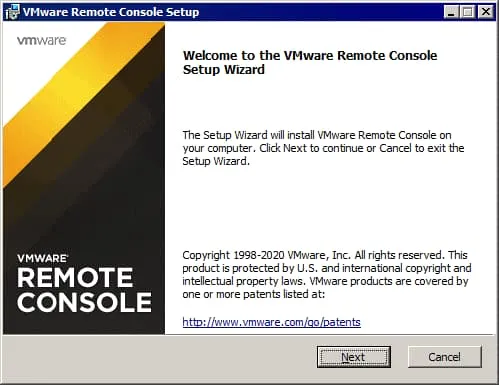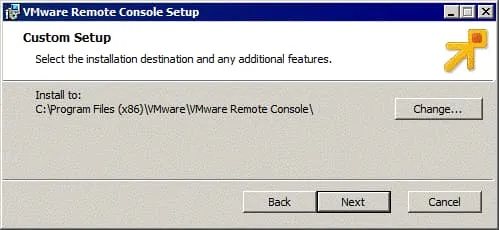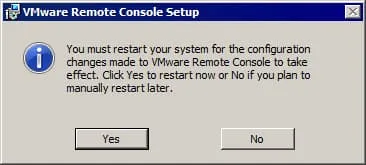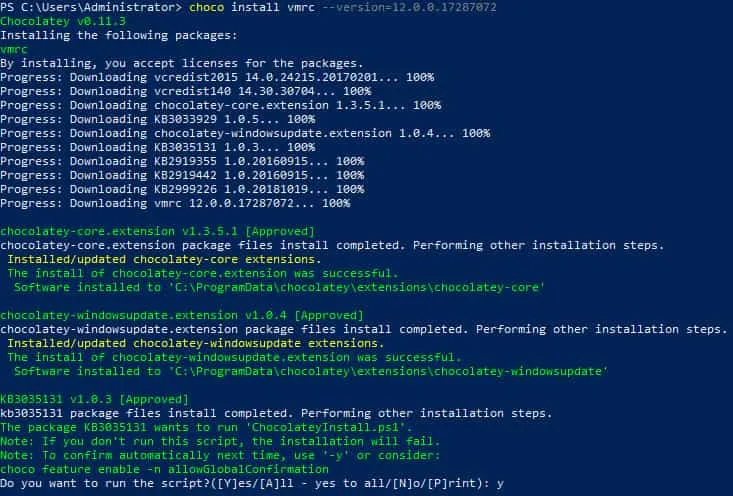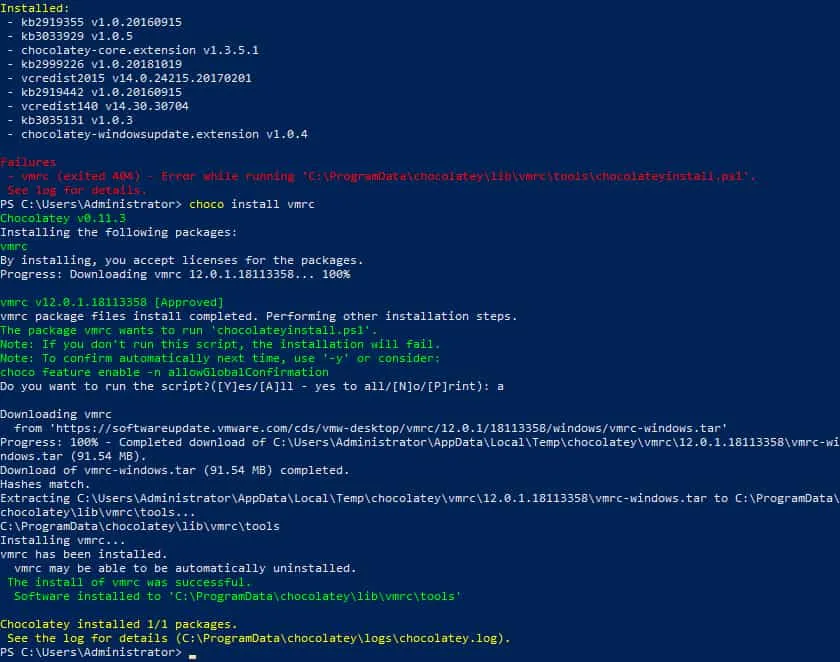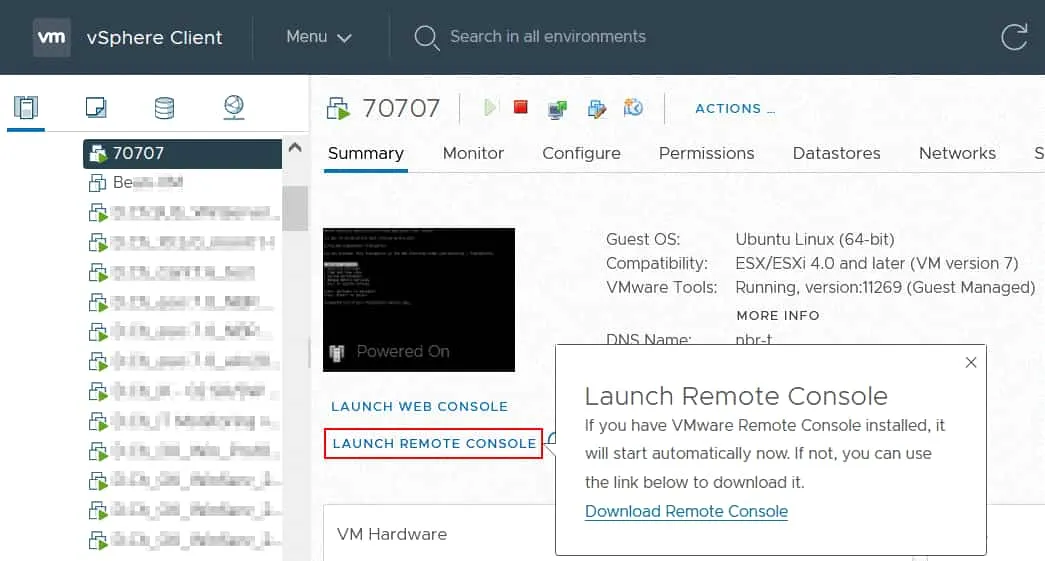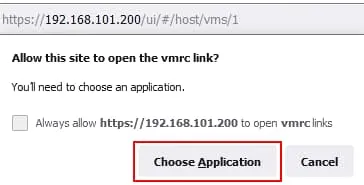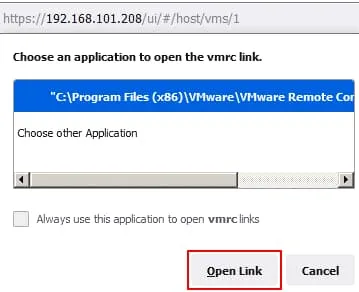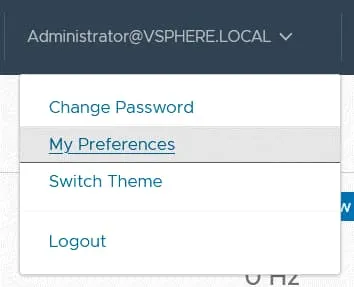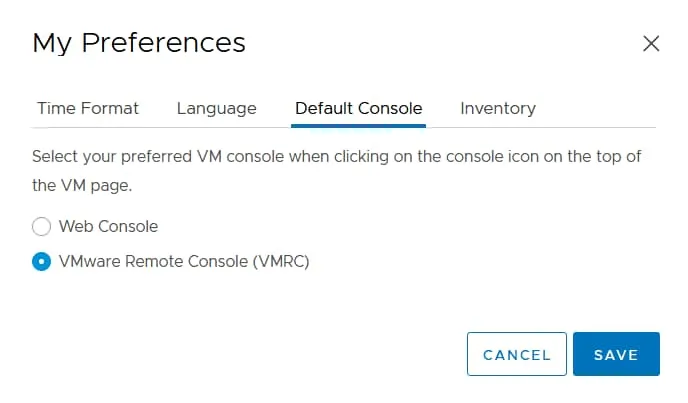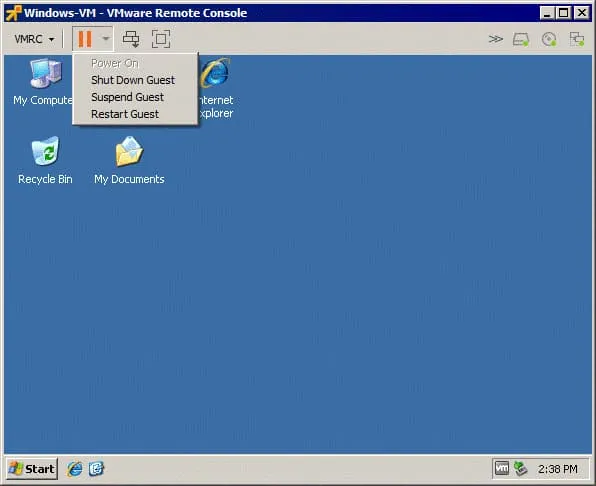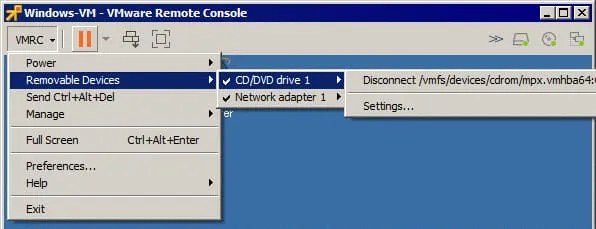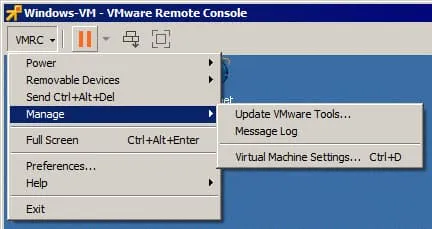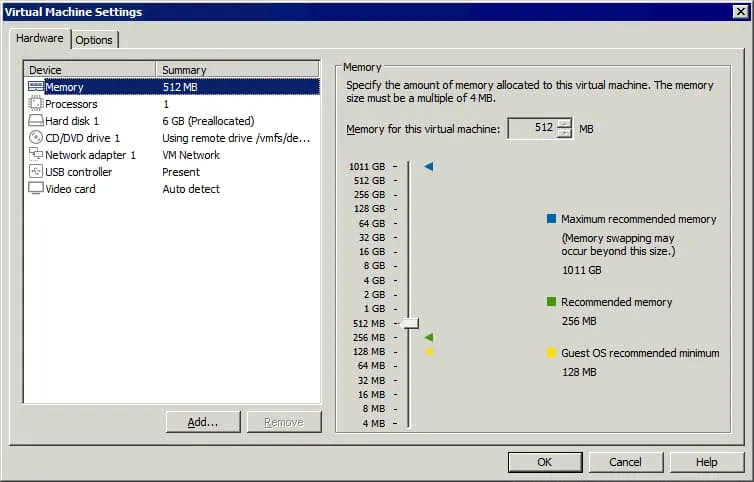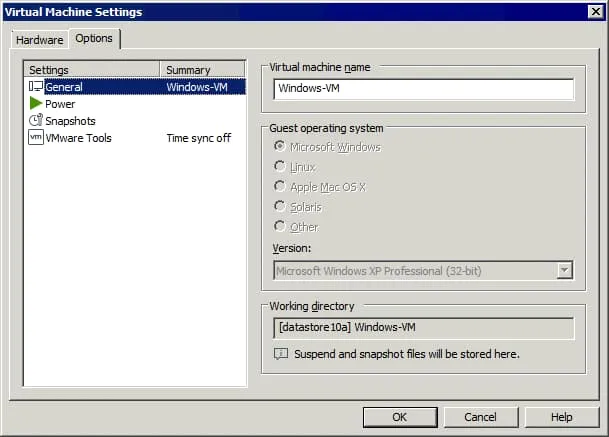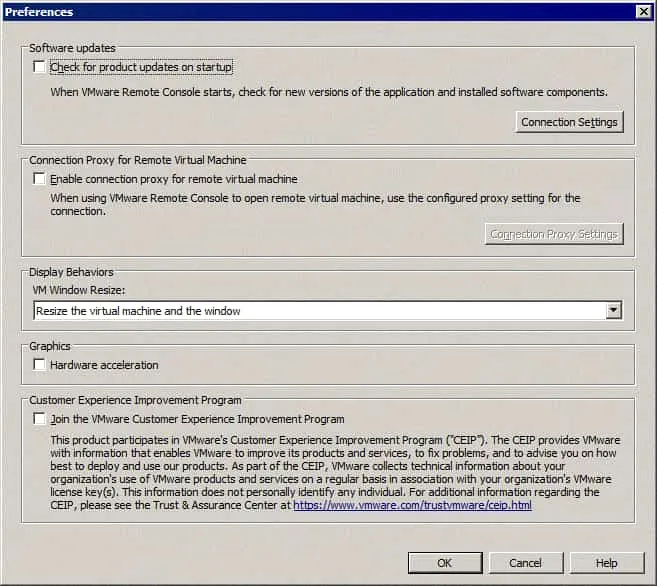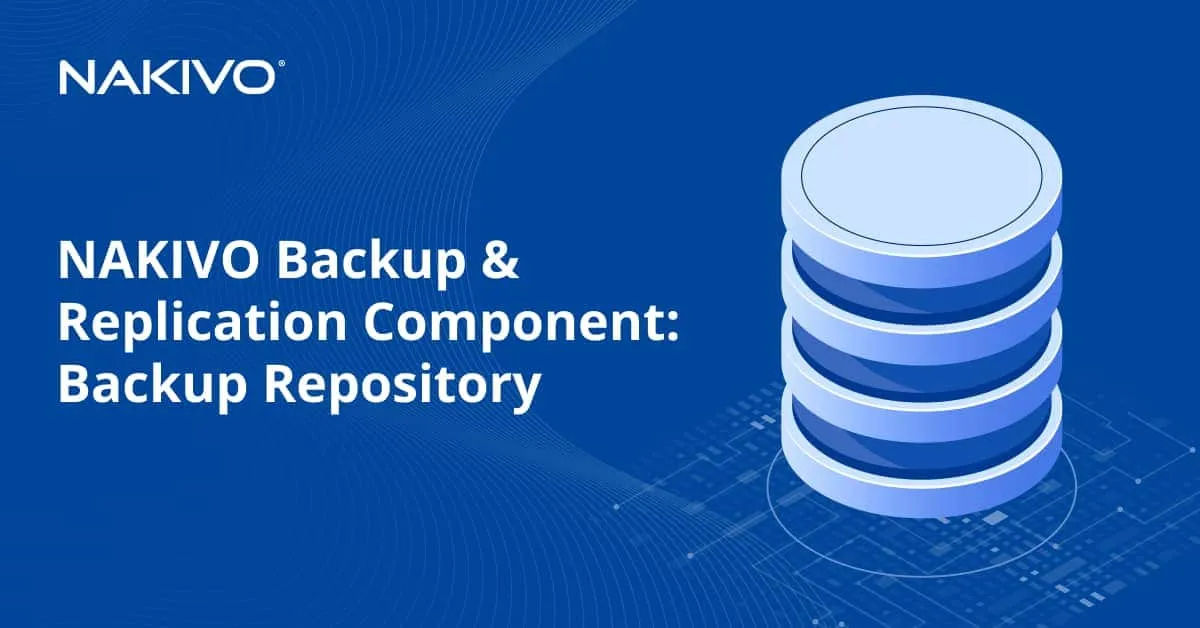How to Use VMware Remote Console in Linux and Windows
VMware provides several ways to manage virtual machines and guest operating systems running on the VMs. In modern vSphere versions, you can use a web interface with VMware Web Console (starting from vSphere 5.1) or install a standalone VMware Remote Console application. This blog post explains what VMware Remote Console is and how to launch VMware Remote Console to configure VM options as well as manage guest operating systems in vSphere.
What Is VMware Console?
Users of earlier vSphere versions such as vSphere 4.x and vSphere 5.x are familiar with the standalone VMware vSphere Client application (written on C#) that is used to manage ESXi hosts and VMs. The C# vSphere Client for Windows had an option to manage a guest operating system (OS) in the client window. Now, in vSphere 6.x and vSphere 7.0, users should use the HTML 5 vSphere Client and VMware Host Client, which provide a web interface for managing vSphere resources including guest operating systems on VMs. The default option is using VMware Web Console. Another option is installing VMware Remote Console on your computer.
Don’t confuse VMware console, which is a tool to manage guests in the GUI, with the command line (console) interfaces such as ESXCLI and Power CLI. VMware console displays the user interface of a guest OS similarly to how you see the interface of the host OS on a physical monitor connected to your computer. I will cover VMware Web Console in brief before going to the detailed explanation of VMware Remote Console.
VMware Web Console
The HTML5 versions of VMware vSphere Client and VMware Host Client allow you to open VMware Web Console in a web interface to manage a guest OS of a running VM without installing additional applications (see the screenshot below). In VMware Host Client, you can open Web Console as a window in the same tab or open Web Console in a new tab.
In VMware vSphere Client, VMware Web Console always opens in a new tab in the web browser. On the screenshot below, you can see the interface of the NAKIVO Backup & Replication virtual appliance (the Transporter appliance based on Linux) in the VMware Web Console opened from VMware vSphere Client in a new tab in the web browser. The NAKIVO Backup & Replication virtual appliance is a preconfigured VMware vSphere VM with selected installed components (you can select a virtual appliance with the needed components on the website when downloading the solution).
What Is VMware Remote Console
VMware Remote Console is a standalone application that you can install on computers running Linux, Windows, and macOS to manage VMware vSphere VMs and guest operating systems running on these VMs. VMware Remote Console (VMRC) is the alternative to VMware Web Console for guest management and provides better performance and stability. You can use VMware Workstation (or VMware Fusion Pro on macOS) as a replacement for VMware Remote Console, but the advantage of VMware Remote Console is that you don’t need to buy a license. VMware Remote Console is not pre-installed and must be installed manually.
VMRC features
VMRC provides remote access to a guest OS and VM devices and allows you to edit VM settings. You can add virtual processors, memory, virtual disks, virtual floppy drives, CD/DVD drives, insert ISO images into CD/DVD drives, manage virtual network adapters, etc. You can change existing settings and change a virtual machine’s name.
You can connect a removable USB device such as a USB flash drive or a USB HDD attached to your local machine to a remote VM running on an ESXi host by using VMware Remote Console. This functionality is available via the USB passthrough feature.
Other VMRC features include:
- VMware Remote Console supports proxy in a network configuration for connecting to an ESXi host and VMs.
- You can initiate installing VMware Tools from VMware Remote Console.
- VMRC can fit the screen resolution of a guest OS when you change the resolution of the VMware Remote Console Window.
- VMRC is a free application.
How to Download VMware Remote Console
https://customerconnect.vmware.com/en/downloads/details?downloadGroup=VMRC1201&productId=876
You need to log in with a VMware account to open VMRC download links.
Once logged in, locate the version for the needed platform and hit Download Now. Save the file to a custom location on your machine.
The VMware Remote Console installer for Windows is provided as a ZIP archive that contains the EXE file. VMRC for Linux is provided as a .bundle installation file. In my example, I download the installer files of VMRC version 12. This blog post is focused on installing and configuring VMRC on Linux and Windows; macOS users should visit the Apple Store to get the VMware Remote Console.
Installing VMRC on Linux
sudo apt-get install libaio1
Go to the directory to which you saved the downloaded bundle file of the VMware Remote Console installer.
Edit the permissions to allow executing the bundle file. The operations explained in this tutorial require root privileges.
sudo chmod +x ./VMware-Remote-Console-12.0.0-17287072.x86_64.bundle
Note: VMRC is not available in Linux software repositories. For this reason, you need to install VMRC by using the downloaded installation bundle.
After setting the permissions run the VMRC installer:
sudo ./VMware-Remote-Console-12.0.0-17287072.x86_64.bundle
The graphical user interface of VMware Remote Console Installer opens in a new window. You should see a user-friendly installation wizard.
1. On the Welcome to the VMware Remote Console installer screen, select I accept the terms in the license agreement. Click Next on each screen to continue.
2. Determine whether you would like to check product updates on startup.
Hit Yes or No depending on your needs. I select No because I don’t want to install updates automatically.
3. Select whether you want to join the VMware Customer Experience Improvement Program (CEIP) and send statistics to VMware.
Click Yes or No depending on your needs. I select No in this walkthrough.
4. The product is ready to be installed. Click Install.
Wait until the installation process is finished.
5. If you see Installation was successful, you can close the window of the VMRC installer.
How to Launch VMware Remote Console in Linux
Let’s go over how to launch VMRC in Linux to manage a VM running on an ESXi host. In this example, I use VMware Host Client to access the ESXi host.
1. Enter the IP address of an ESXi host in a web browser and log in to VMware Host Client.
2. In the Navigator pane, click Virtual Machines and select the needed VM.
Tip: Use dedicated ESXi backup software to perform regular backups of your VMs residing on ESXi hosts.
3. Click the Monitor icon to open the menu with the VMware Console options to manage this VM’s guest operating system. A menu with multiple VMware Console options appears.
- The first three options are used to open VMware Web Console in the web browser.
- The Launch remote console option is used to open the interface of a guest OS in the VMware Remote Console Application you have previously installed on your computer.
- Download VMRC. This option is used to get the VMRC download link and install VMware Remote Console.
4. Click Launch remote console.
Once you have clicked Launch remote console, the pop-up pane is displayed under the address bar in the web browser. You need to select an application to open the VMRC link.
5. Click Choose Application. You can select the checkbox to always allow your ESXi host to open VMRC links for this IP address.
6. Choose an application to open the VMRC link. If you have installed only VMware Remote Console on your computer, this application is selected by default. If you have VMware Workstation on your computer, VMware Workstation is selected by default. You can click Choose and select the needed application. You cannot install VMware Remote Console and VMware Workstation on the same Linux machine because they share certain components required for their operation.
7. After selecting VMware Remote Console, click Open Link.
8. A certificate warning is displayed. Click Connect Anyway to continue. Select the Always trust this host with this certificate checkbox to skip this message in the future when connecting to VMs on this ESXi host.
9. Now you are connected to the user interface of the guest OS of the selected VM running on the ESXi host.
You can connect to multiple VMs and launch multiple instances of VMware Remote Console.
Installing VMRC in Windows
The VMware Remote Console setup wizard is started in a new window. Installing VMRC in Windows by using this wizard is straightforward.
1. The first step of the wizard is the welcome screen. There is nothing to configure on this screen. Click Next at each step to continue.
2. Read and accept the End-User License Agreement.
3. Select the installation destination and any additional features.
Click Change and select a directory to install the application if you don’t want to use the default installation path.
4. Select User Experience settings. You can deselect the checkboxes if you don’t want to enable automatic updates and send additional information to VMware:
- Check for product updates at startup
- Join the VMware Customer Experience Improvement Program
I select No for both these options.
5. Ready to install. Hit Install to begin the installation.
Wait until the wizard installs VMware Remote Console on your computer.
6. Once installation is completed, click Finish to close the installer window.
7. You must restart your operating system. Click Yes to restart now or click No if you want to manually restart later.
After system reboot you can launch VMware Remote Console.
Installing VMRC with Chocolatey
Install Chocolatey if this software manager for Windows is not installed on your machine. Download and run this PowerShell script to install Chocolatey:
https://community.chocolatey.org/install.ps1
If the script doesn’t run, set the execution policy by running this command:
Set-ExecutionPolicy Bypass -Scope Process -Force; [System.Net.ServicePointManager]::SecurityProtocol = [System.Net.ServicePointManager]::SecurityProtocol -bor 3072; iex ((New-Object System.Net.WebClient).DownloadString(‘https://community.chocolatey.org/install.ps1’))
Run the command to install VMware Remote Console 12.0 0 for Windows from software repositories with Chocolatey:
choco install vmrc –version=12.0.0.17287072
This command downloads and installs the needed software packages.
Press Y (yes) or A (Yes to all) when the confirmation to install a package is required to continue.
If you see a failure related to the VMRC package, try to run the command once again.
choco install vmrc –version=12.0.0.17287072
When the command execution is finished, the number of installed packages is displayed in PowerShell. If you see The install of vmrc was successful, you can close this PowerShell console window and use VMware Remote Console.
How to Use VMware Remote Console in Windows
1. Open the IP address of your vCenter Server in a web browser, open VMware vSphere Client, and log in. Go to Host and Clusters and select the needed virtual machine in the inventory.
2. When the VM is selected, you can see the preview screen of the guest OS user interface. Under this preview screen, you should see two links. Click Launch Remote Console for connecting to the VM in VMware Remote Console installed in your Windows system.
Note: If you haven’t installed VMRC yet, you can click a link to the download page of the VMware website or use Web Console in a web browser. If you have not configured VMware backup yet, it is recommended that you back up VMs managed by vCenter.
3. The Allow this site to open the vmrc link? dialog pane appears under the address bar in your web browser. Click Choose Application.
4. If the path to VMware Remote Console is displayed, then VMRC is selected. If VMRC is not selected, click Choose other Application and select the VMRC EXE file manually.
5. Click Open Link.
VMRC should open and connect to the VM now.
You can set VMware Remote Console to be used by default in VMware vSphere Client. Click your account name in the top right corner of the web interface and hit My Preferences.
Click the Default Console tab and select VMware Remote Console (VMRC). Click Save to save settings and close this dialog.
VMRC Interface and Options
In the top left corner, you can see the VMRC menu, the shortcut menu to change the VM state (Power On, Shut Down Guest, Suspend Guest, and Restart Guest), the button to send the Ctrl+Alt+Del combination to the guest OS, and the button to enable the full-screen mode. These additional menus and buttons duplicate some options of the VMRC menu.
In the top right corner of the VMRC window, you can expand a panel and see icons of virtual devices such as virtual hard disks, CD/DVD-ROM drives, and network adapters. Right-click the device icon to open device settings in the VM settings window.
You can change the VMRC window size, and the size of the guest OS GUI can adjust to the changed VMRC window size (VMware Tools must be installed in the guest OS).
Options in the VMRC menu
Removable devices. You can use this submenu for fast connect/disconnect of virtual devices including virtual CD/DVD drives, network adapters, and USB devices attached to your local machine on which VMware Remote Console is installed. In order to connect a removable device, go to VMRC > Removable Devices > Device_Name > Connect. In order to disconnect the device, go to the same menu and click Disconnect.
Send Ctrl+Alt+Del. If you press Ctrl+Alt+Del on your local machine, your host operating system on the local machine reacts to this combination. This menu entry allows you to send the Ctrl+Alt+Del combination directly to the guest OS without any impact on the host OS. As an alternative to this menu entry, you can press the Ctrl+Alt+Insert combination.
Manage. See a detailed description of this entry below.
Full Screen. Opens VMware Remote Console in the full-screen mode.
Preferences. Opens the Preferences window, which is covered below.
Help. Displays the help information.
Exit. Can be used to close the VMRC window and provides the same result as if you have clicked the x button in the top right corner of the window.
The Manage menu
The Virtual machine settings window of VMRC is similar to the VM settings window of VMware Workstation. The window contains two tabs: Hardware and Settings.
If you upgrade the guest OS, you can change the guest operating system in the Options tab to optimize VM performance. A VM must be powered off to change the guest OS in VM settings. Once you change the guest operating system in VM settings, the changes are written to the VM’s VMX file.
The Preferences window
Software Updates. You can change automatic update settings and configure connection settings by selecting a proxy server for an internet connection.
Display behaviors. There are two options of how the guest OS interface reacts to changing the VMRC window size:
- Resize the virtual machine and the window. The resolution of the VM display is resized to fit the window.
- Stretch the virtual machine in the window. The VM display resolution is not changed and the VM display is stretched to fit the window.
Connection Proxy for Remote Virtual Machine. You can enter the settings of the proxy server if the proxy server is required in your network.
Graphics. Hardware acceleration can improve performance but is disabled by default to avoid issues if an unstable graphic card is used.
Customer Experience Improvement Program. If you need to change CEIP settings during VMRC installation, you can do it here by selecting/deselecting the checkbox.
Other VMRC Configuration Parameters
VMRC logs in Linux are stored in %TEMP%/vmware-%USERNAME%/
The USB Arbitrator log is stored in /tmp/vmware-root/
Using VMware Workstation and VMRC in Windows. If you install VMware Workstation on your host Windows OS after installing VMware Remote Console, VMware Workstation can be set as the default application to open VMRC links when opening them from a web browser. If you need to use VMware Remote Console by default, check the registry values. You can do this operation in PowerShell:
Get-Item “HKLM:\SOFTWARE\Classes\vmrc\DefaultIcon”
Get-Item “HKLM:\SOFTWARE\Classes\vmrc\shell\open\command”
In order to change settings and use VMRC by default, write these values to the registry:
Set-Item HKLM:\SOFTWARE\Classes\vmrc\DefaultIcon -Value ‘”C:\Program Files (x86)\VMware\VMware Remote Console\vmrc.exe”,0’
Set-Item HKLM:\SOFTWARE\Classes\vmrc\shell\open\command -Value ‘”C:\Program Files (x86)\VMware\VMware Remote Console\vmrc.exe” “%1″‘
How to Exit VMware Remote Console
How to Uninstall VMware Remote Console
Uninstalling VMRC in Linux
If you need to uninstall VMware Remote Console (for example, you want to install VMware Workstation), you can do this in the Linux terminal. Display the list of all VMware applications installed on the Linux machine:
vmware-installer -l
The command to uninstall VMRC is:
vmware-installer –uninstall-product vmware-vmrc
If you have issues when trying to uninstall VMRC, you can perform the following actions. Open the /etc/vmware-installer/database file in DB Explorer for SQLite. Locate the component_dependencies table. Delete the row that contains vmware-usbarbitrator>=17.1.1.
Uninstalling VMRC in Windows
Go to Control Panel > Programs and features, select VMware Remote Console in the list of installed applications and click Uninstall.
If you used Chocolatey to install VMRC, use this command to uninstall this application:
choco uninstall vmrc
Note: Download VMware VCP Study Guide to learn more about VMware vSphere features.
Conclusion
VMware Remote Console is a useful application to manage virtual machines and guest operating systems in VMware vSphere. This blog post has explained how to install VMware Remote Console 12.0 0 for Windows and Linux and how to use VMware Remote Console as well as covered VMRC configuration. VMware VMRC is a free lightweight multi-platform tool that is not difficult to use.


